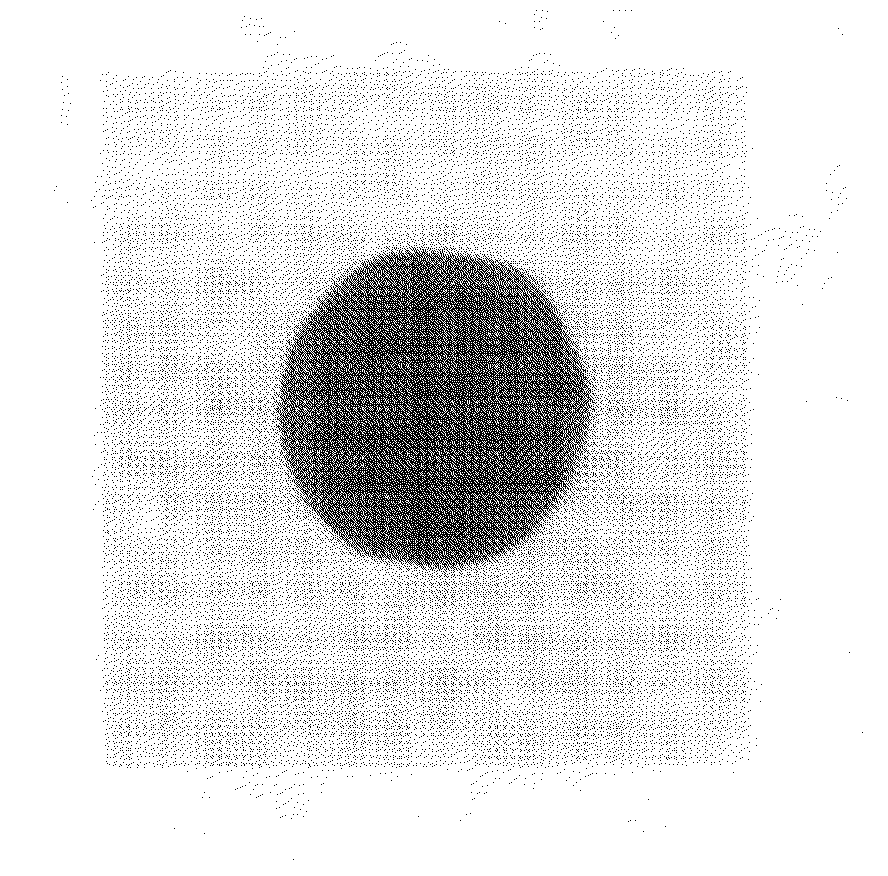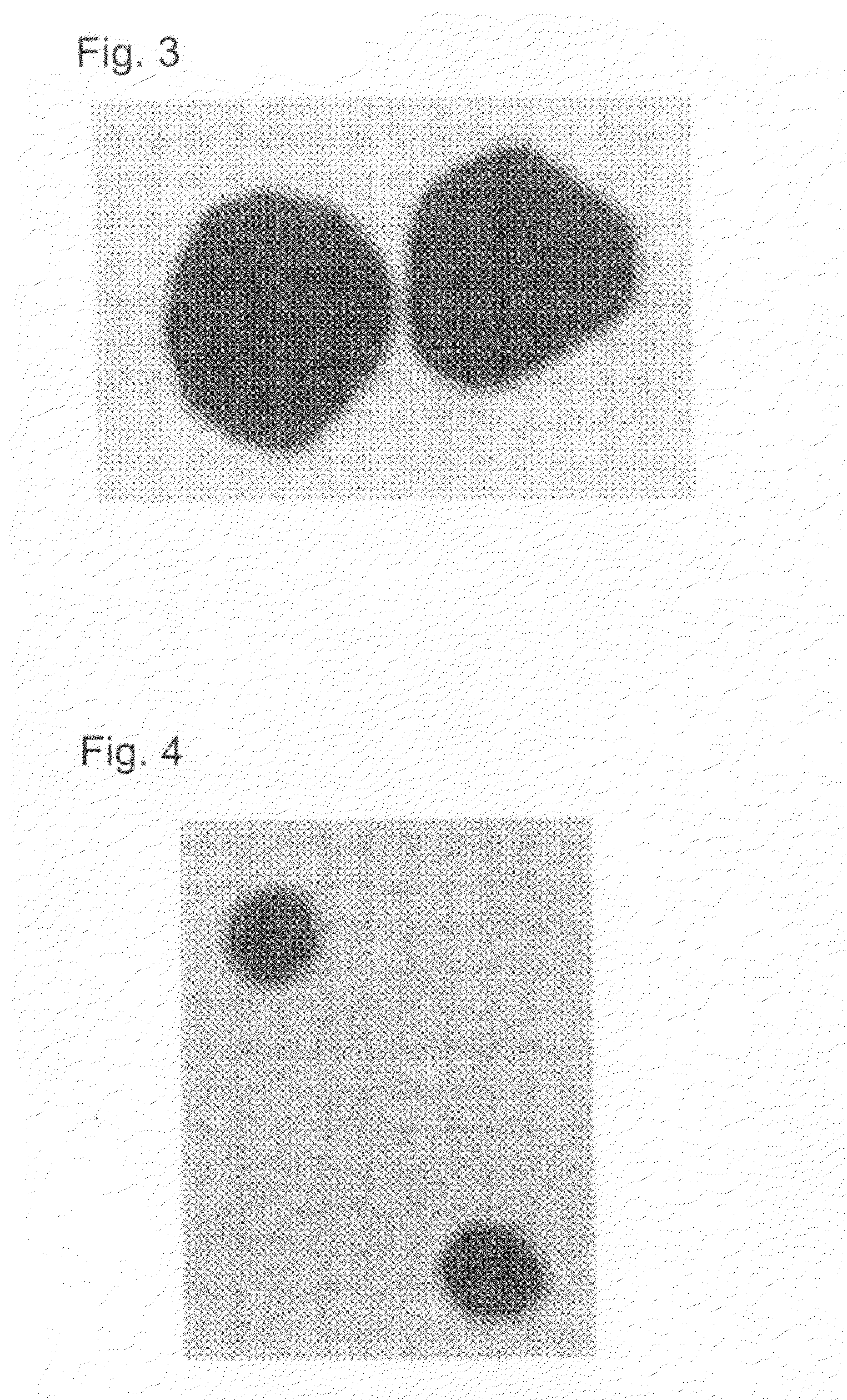Nanofunctional silica particles and manufacturing method thereof
- Summary
- Abstract
- Description
- Claims
- Application Information
AI Technical Summary
Benefits of technology
Problems solved by technology
Method used
Image
Examples
example 1
100 nm Gold Colloid Coated with a 20 nm or Less MPS Layer
[0109]To 90 μL of a 100 nm gold colloid (manufactured by Tanaka Kikinzoku Kogyo K.K.) were each added 100 μL of MPS diluted 500 times and 810 μL of a 28% by weight aqueous ammonia solution, and the components were mixed with one another. The reactive components were then allowed to react with one another at 100° C. for 3 hours. Next, the reaction finished liquid was subjected to a high-speed centrifugal separator (at 10,000×g for 5 minutes). Pellets thereof were then collected. The resultant pellets were repeatedly washed by centrifugation totally 6 times, using 70% by volume ethanol and distilled water alternately three times, respectively. Next, the washed pellets were stirred in an ultrasonic crusher, and then sampled to be observed with an electron microscope. As a result, a 20 nm or less MPS layer coat was recognized. The control ratio of the thicknesses of the shells was about 15%.
example 2
100 nm Gold Colloid Coated with a 10 nm or Less MPS Layer
[0110]To 85 μL of a 100 nm gold colloid (manufactured by Tanaka Kikinzoku Kogyo K.K.) were each added 50 μl of MPS diluted 500 times and 865 μL of a 28% by weight aqueous ammonia solution, and the components were mixed with one another. The reactive components were then allowed to react with one another at 100° C. for 3 hours. Next, the reaction finished liquid was subjected to a high-speed centrifugal separator (at 10,000×g for 5 minutes). Pellets thereof were then collected. The resultant pellets were repeatedly washed by centrifugation totally 6 times, using 70% by volume ethanol and distilled water alternately three times, respectively. Next, the washed pellets were stirred in an ultrasonic crusher, and then sampled to be observed with an electron microscope. As a result, a 10 nm or less MPS layer coat was recognized. The control ratio of the thicknesses of the shells was about 30%.
example 3
250 nm Gold Colloid Coated with a 30 nm or Less MPS Layer
[0111]To 500 μL of a 250 nm gold colloid (manufactured by BB International) were each added 100 μL of MPS diluted 500 times and 450 μL of a 28% by weight aqueous ammonia solution, and the components were mixed with one another. The reactive components were then allowed to react with one another at 100° C. for 3 hours. Next, the reaction finished liquid was subjected to a high-speed centrifugal separator (at 10,000×g for 5 minutes). Pellets thereof were then collected. The resultant pellets were repeatedly washed by centrifugation totally 6 times, using 70% by volume ethanol and distilled water alternately three times, respectively. Next, the washed pellets were stirred in an ultrasonic crusher, and then sampled to be observed with an electron microscope. As a result, a 30 nm or less MPS layer coat was recognized. The control ratio of the thicknesses of the shells was about 16.
PUM
| Property | Measurement | Unit |
|---|---|---|
| Temperature | aaaaa | aaaaa |
| Fraction | aaaaa | aaaaa |
| Nanoscale particle size | aaaaa | aaaaa |
Abstract
Description
Claims
Application Information
 Login to View More
Login to View More - R&D
- Intellectual Property
- Life Sciences
- Materials
- Tech Scout
- Unparalleled Data Quality
- Higher Quality Content
- 60% Fewer Hallucinations
Browse by: Latest US Patents, China's latest patents, Technical Efficacy Thesaurus, Application Domain, Technology Topic, Popular Technical Reports.
© 2025 PatSnap. All rights reserved.Legal|Privacy policy|Modern Slavery Act Transparency Statement|Sitemap|About US| Contact US: help@patsnap.com



